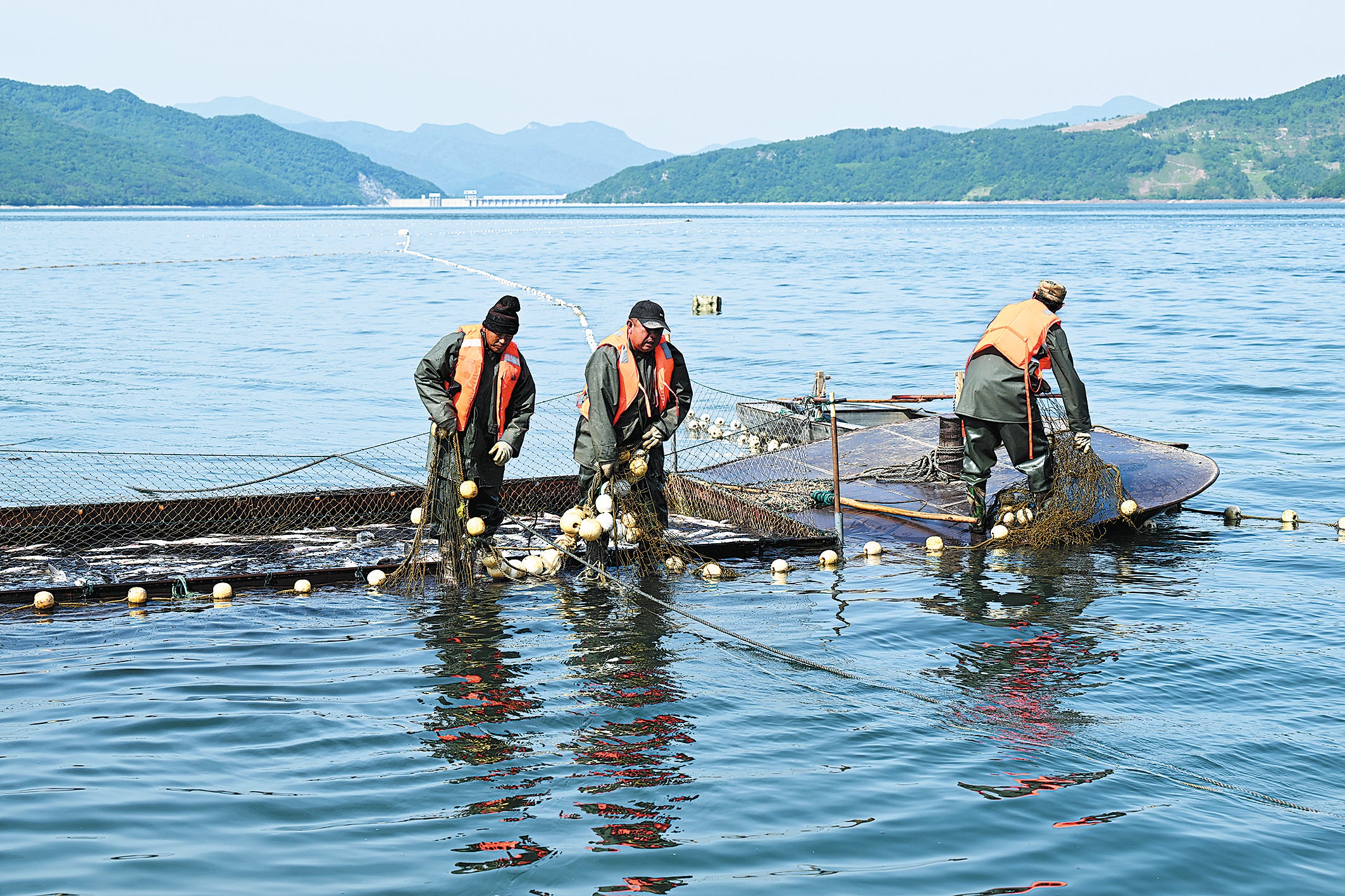Fish farms turn murky waters clear
THE ARTICLES ON THESE PAGES ARE PRODUCED BY CHINA DAILY, WHICH TAKES SOLE RESPONSIBILITY FOR THE CONTENTS

The once murky waters found in lakes and reservoirs across Northeast China’s Liaoning province are being made clear again thanks to the help of a partner found in Mother Nature — fish.
The Liaoning Water Resource Management Group in 2016 began implementing a plan to establish fish farms in algae-plagued water bodies to improve water quality and provide a secondary source of revenue.
Algal blooms emerge as nitrogen and phosphorus build up in lakes, reservoirs and other slow-moving waters due to agricultural runoff and contamination from untreated urban sewage.
The blooms endanger the ecosystem of freshwater lakes and can cause taste and odor problems in waters used for drinking.
The water management group, which operates 16 reservoirs across Liaoning and supplies nearly 70 per cent of the province’s water, has long wrestled with algae.
By introducing fish into water bodies, the water resource group is able to control algal blooms, clean up the water and then re-catch the fish to sell on the market once they’ve reached maturity.

The approach is a departure from conventional methods used to handle algal outbreaks such as through costly mechanical removals, or using chemicals including algicides or herbicides.
In recent years, provinces such as Yunnan, Anhui and Shandong, where freshwater lakes are abundant, have also rolled out similar programmes.
However, these programmes’ custodians have warned the process is not as simple as it seems.
“Not all fish can thrive in reservoirs,” said Guan Wankai, who oversees the group’s operations at Guanyinge Reservoir in Benxi, southeast Liaoning.
Guan said to make the programme work, the group has looked to filter-feeding fish including carp and types of catfish, that guzzle particles suspended in the water.
He said the fish in Guanyinge Reservoir are mostly silver and bighead carp.
Citing research data, the official said harvesting 2.2lb of carp is equivalent to removing about 0.04lb of nitrogen, 0.003lb of phosphorus and 0.26lb of carbon from the water. When calculated by the biomass of algae, 88lb are eliminated from the water with 2.2lb of fish caught.
The group said it had released 7,945 metric tons of carp and other species across Liaoning by last year, and the harvest amounted to 28,100 tons.
In 2023, 4,600 tons of fish were caught, with the group raking in an additional 71 million yuan (£7.82 million), it said.
Official figures show that 52 per cent of the country’s freshwater aquaculture areas are lakes and reservoirs, which produce about one-fifth of China’s freshwater catch.
These fish, especially those from reservoirs, are commonly referred to as “ecological fish” due to their health benefits.
China is the world’s fourth largest organic food producer by growing area, and sales of such food reached 87.7 billion yuan (£9.66 billion) in 2022, according to a report by the State Administration of Market Regulation.
The group said many of its fish products had been certified organic and have proved to be a hit in markets including Beijing, Tianjin and Guangzhou of Guangdong province. The organic status is reviewed every year.
Fish raised in reservoirs, according to the group, are richer in protein and have a lower fat content due to the province’s lengthy winter. When caught in spring, the fat stores of the fish have almost depleted, meaning the flesh is firm and chewy.
“With living standards increasing, consumers now prefer organic fish raised in open waters,” the group said. “Our fish business has a bright future ahead.”

Bookmark popover
Removed from bookmarks